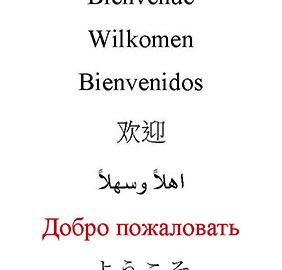
The short answer is, some languages require more space than others to express the same thing. When translating from English into Korean, you should expect the Korean written result to take up 10-15% less space on the page, because Korean is a more compact script. When translating from English into French, the French result might take up to 30% more space, because the French use more words. Other languages are unpredictable – depending on the subject matter and the writing style or tone, a Japanese translation could end up using up to 60% more or 10% fewer characters than the English source.
Why does text expansion matter?
Software Localization. Translating the user interface for an application can be quite challenging if the developer did not provide enough space for text expansion. A field that was sized to accommodate user interface strings in one language will be too small for the same command translated into a language that expands. When developing an application, follow best practices for “internationalization” so that the product is easier to localize for different languages and markets later.
Layout and design. A website, brochure, or advertisement that looks perfect in English might look sparse in Chinese, if the text is reduced out of proportion of the rest of the design. Or it might look crowded in Russian. These types of media require professional multilingual DTP services to adjust the formatting to accommodate text expansion or contraction after the translation has been completed (in addition to any localized visuals and design elements that are needed for a specific foreign market).
Voice-overs. Some languages simply require more words than others to express the same concept or sentiment. It’s not so much a problem of visual text expansion as it is a problem of timing. If a client comes to us with an English-language informational video, it is very challenging to write and record a Portuguese voice-over that will exactly match the timing of the original, without the voice actor sounding like he/she is speed-reading. This is because Portuguese expands. If you are producing a video knowing you’ll create multilingual voice-overs, try to take a leisurely pace with the English source. If the video is already created, make sure the translator specializes in script-writing and is good at condensing and paraphrasing. You might also adapt the video to match the sound track – slowing it down or freezing certain frames if you can.
How can you predict text expansion?
You can find a list of average text expansion rates here, for a rough estimate, but another resource we like to use for our clients is “pseudo-translation.” Your project manager can upload the source text into a tool to quickly run a “fake” translation that will predict the appearance of the target text when translation is finished so you can anticipate whether design changes will be needed.
Your language service partner can help you manage text expansion and other practical implications of translation and localization. It’s never too early to start planning for localization. If your product or marketing materials are designed with these issues in mind, you can prevent headaches down the line when you are ready to translate.
Business & Finance Articles on Business 2 Community(113)
Report Post



